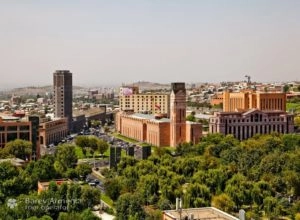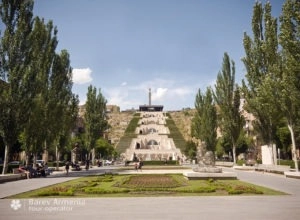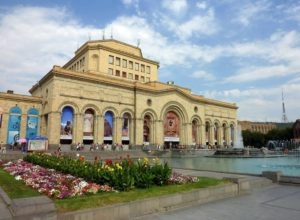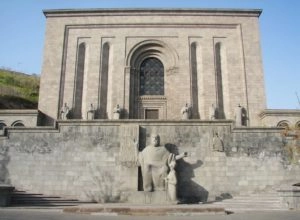Erebuni Museum-Reserve in Yerevan
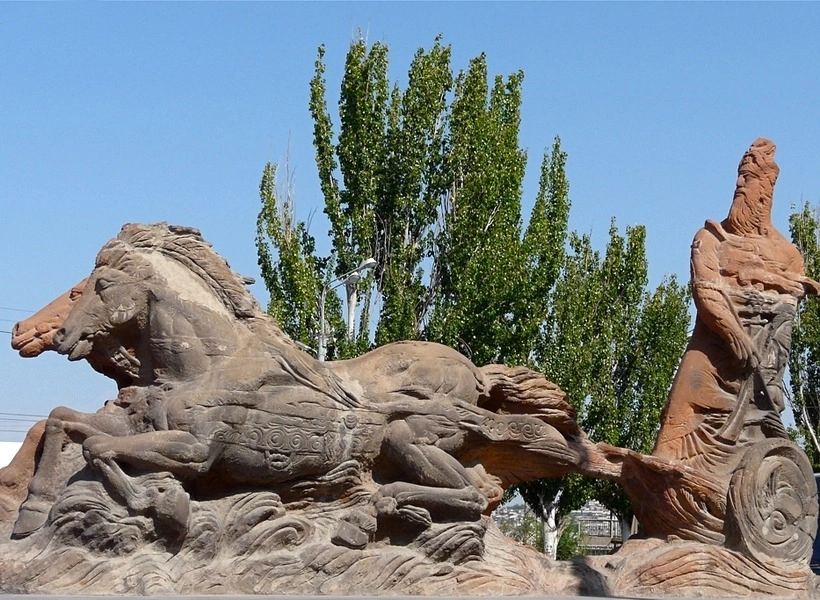
Founded: 1968
Subject: History, Archeology
Architects: Azatyan, Arzumanyan
Working days: Tue-Sun
Opening hours: 10:30-16:30
Erebuni settlement is placed on Arin Berd which is situated between Nor-Aresh and Vardashen districts in south-eastern periphery of Yerevan. It was built by one of the greatest kings of Urartian state Argishty the First (786-765/764 BC) in 782 BC, who, according to Khorkhoryan inscription, had resettled here 6600 soldiers from countries Khate and Tsupany situated in western part of Armenian highlands. In the late 19th archeologist A. Ivanovsky took a basalt cuneiform inscription from P. Ter-Avetikyan who lived in Nork. The inscription was interpreted and published by M. Nikolsky.:
A. Ivanovsky made partial excavations here, since then the hill had remained unexamined for a long time. Regular excavations in Erebuni fortress began in 1950, which was led by K. Hovhannisyan. It turned out from the cuneiform inscriptions found in the first year, that this fortress had been built by Argishty the First and named Erebuni (Erbuni). In professional literature there are different opinions about the origin of the name of Erebuni. According to them Erebuni means “victory”, “capture”.There are also opinions that Erebuni means “city of independent people”.
A part of the territory close to the fortress was surrounded with high walls. On the rock of monolith constructors raised and smoothed huge stone bulks, the socle with 2m. height was arranged and then the wall with 8m. height made of raw brick was raised. The wall at each 8m. was fixed with counterforts of 5m. height.
The access of the fortress was placed on the southern slope of the hill and was protected with high towers, from there one could reach the square by stairs. The square divides the territory of the fortress conditionally into 3 parts: religious, palatial and economical.The religious part is situated on the south-western part from the square.The temple of supreme god Khaldy of Van was situated here with its shape of tower buildings and pillared halls. The latter was composed of 12 wooden columns, which flied up on bases. The walls were decorated with rich wall-paintings. As for the shape of tower building perhaps it had several stores, where probably sacrifices and other ritual events were realized. But it is possible that the shape of tower building was just the temple, and the pillared hall was a separate building.
The palace buildings were on the northern part from the square. The central part consisted of pillared yard which had 17x14m. surface. The yard consisted of 5 by five columns on longitudinal part, and by fours on latitudinal part. The hall of the palace had 17×7.5m seizes. The roof of the hall was flat and had wooden cover and the walls were decorated with multi-colored wall paintings, as well as with carpets. People had hit huge roundish nails to hang carpets. Now some holes are seen clearly. Columned hall took special place. To enter there it was necessary to pass through a narrow and long hall from the pillared yard after that the splendid hall opened. The walls and clay benches were whitened. Five communicating rooms were close to the hall.
Susy temple dedicated to God Ivarsha/Iubsha was on the western part of the palace building. Generally Susy temples were dedicated to urartian supreme god Khaldy and only in Erebuni and Chavushtepeh these temples were correspondingly dedicated to gods Ivarsha and Irmushiny. There are different opinions about god Ivarsha. According to one of them Ivarsha’s worship had had Minor Asian origin. According to another opinion this deity had been one of the deities of the residents of Uaza, which was in the territory of Ararat valley.
